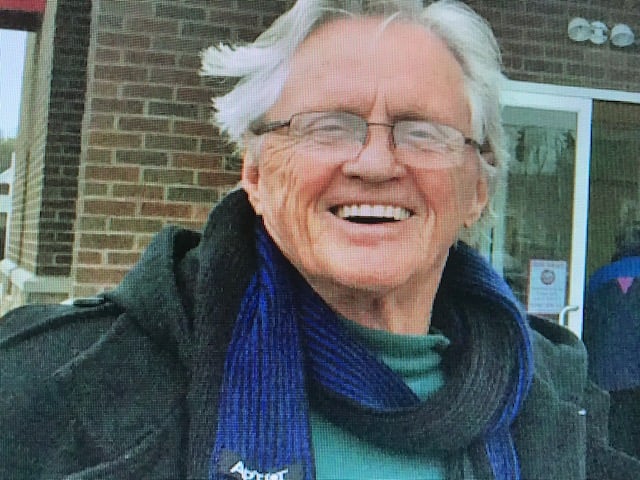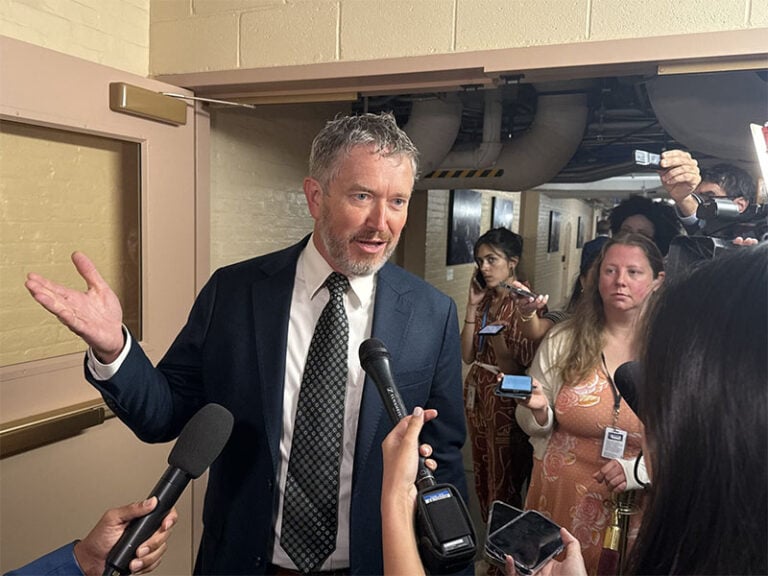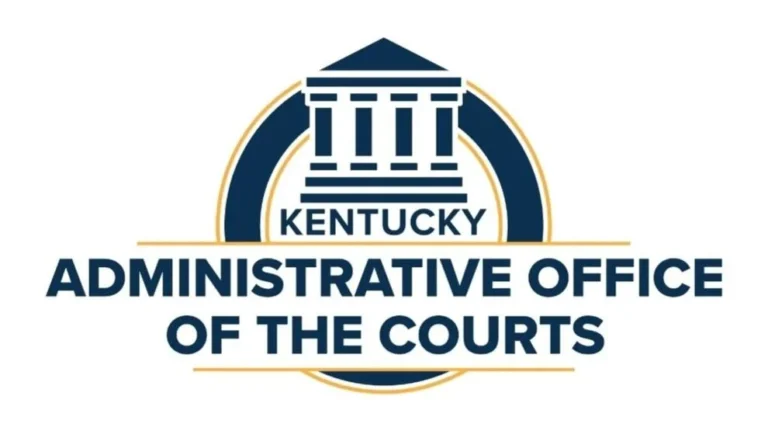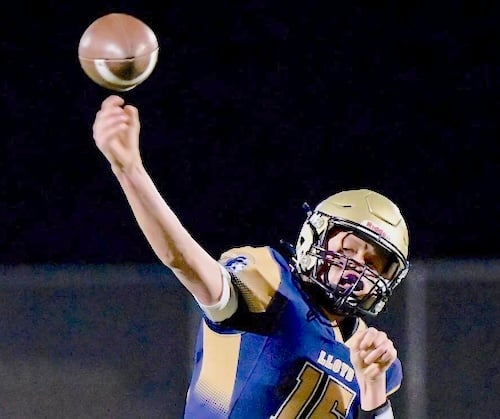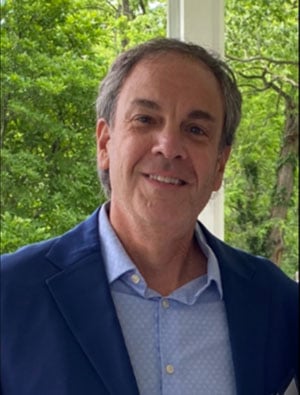
By Kristy Robinson Horine
Special to NKyTribune
The shot is pure Kentucky: a log cabin, a hound lounging on roughhewn porch boards, a neat stack of split wood. The first verse of “Amazing Grace” lifts into the air from the plucked strings of the dulcimer on Mark Eubanks’ lap. After the last of the chords fade from the refrain, Eubanks’ narrative tells the dual history of dulcimer and man, while a video collage deepens the story.
The segment lasts only six and a half minutes, but it’s enough to fill the eyes, ears and minds of the audience. It’s also enough for the Ohio Valley Chapter of the National Academy of Television Arts & Sciences to give an Emmy nod to this particular episode.
Yes, this is Kentucky. This is Bluegrass & Backroads, an Emmy award-winning show produced by Kentucky Farm Bureau team Bob Shrader and Matt Hilton.
Opening sequence
When Bob Shrader was a little boy, he used to string together audio visual equipment, interview family members, then splice the videos together in interesting ways to put on a show.
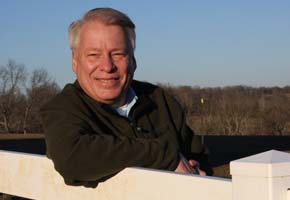
“I’ve been doing this since I was about 7 or 8,” he said, then laughed as he called himself an AV nerd from a young age. “Usually I would change the words around and mess them up. It was fun.”
Shrader went on to graduate from Western Kentucky University, majoring in television. He owned his own business for 20 years, and closed it after 9/11. Ten years ago, he discovered Farm Bureau was hiring, applied for the job and got it.
Hilton arrived at Farm Bureau about a year after that by a more circuitous route. After he realized he wasn’t going to fulfill his childhood dreams of being a professional wrestler or police officer, he, too, went to WKU and studied broadcasting. He moved to Louisville for a stint in television, and heard about the Farm Bureau job from his WKU mentor, Cheryl Beckley.
It wasn’t long after that that Shrader and Hilton discovered they made a solid team who loved to tell a good story.
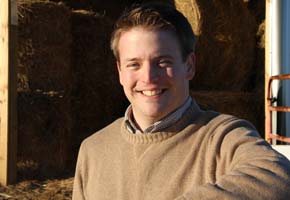
Since 2004, Bluegrass & Backroads has been an internal production of Kentucky Farm Bureau. According to Dan Smaldone, the director of Public Relations, many Farm Bureaus across the nation produce some sort of video work but most don’t produce programming for broadcast television audiences. What makes the Bluegrass & Backroads team unique is that they are a two-man team that has consistently produced award-winning work that showcases the best, most interesting and often hidden treasures of the state.
“It’s the idea of celebrating that we are all a part of the heritage and the culture of Kentucky. We travel the state. We know the issues, we know the celebrations and the good and unique the state has to offer,” Smaldone says. “We have staff that are rolling up their sleeves and walking the same path with our families every day. We have basically made this into an opportunity to share with the rest of the state and beyond.”
Shrader and Hilton are co-producers who pretty much do it all. They find the stories, or follow up on story ideas that are given to them. They both do research, travel together, take turns with interviews, shoot the film, edit the film, work on all the graphics and special effects, and then actually produce a finished video product and make sure it goes to all the right places.

Shrader says the show itself is modeled in a similar way to the Mutual of Omaha’s Wild Kingdom show that was popular in the early sixties through the late eighties. The Wild Kingdom shows really had nothing to do in particular with insurance, but they were a huge draw for increasing ecological awareness. In like manner, Bluegrass & Backroads is more than just a commercial for Kentucky Farm Bureau.
“What I like, producing the show, is we get to go into people’s houses and businesses and ask them questions and get to know them and ask them why they do what they do,” Shrader says. “That’s really special for those folks to share their life with us and let us bring a camera in there to share their lives with everyone else in Kentucky.”
Each show runs just under 30 minutes. Within that time, Shrader and Hilton piece together four different segments on four different people, places or things. Three of the segments run about six and a half minutes, and a fourth segment usually lasts around four minutes. Farm Bureau has made it a sort of policy that each show includes a story that centers on agriculture and farming, an important economic and cultural aspect of the Bluegrass state. If each segment is not just right, the duo will load back up and travel back to the home or business to shoot it again.
A one-day video recording session might take them two hours to edit, or vice versa, with a two-hour shoot that takes them a whole day to edit. Hilton says that while they are usually working on more than one segment at a time, and often filming six months out from the date the episode actually airs, the most important part is showcasing that special something that is uniquely Kentucky. Each segment, he says, takes as long as they need to take to get it right.
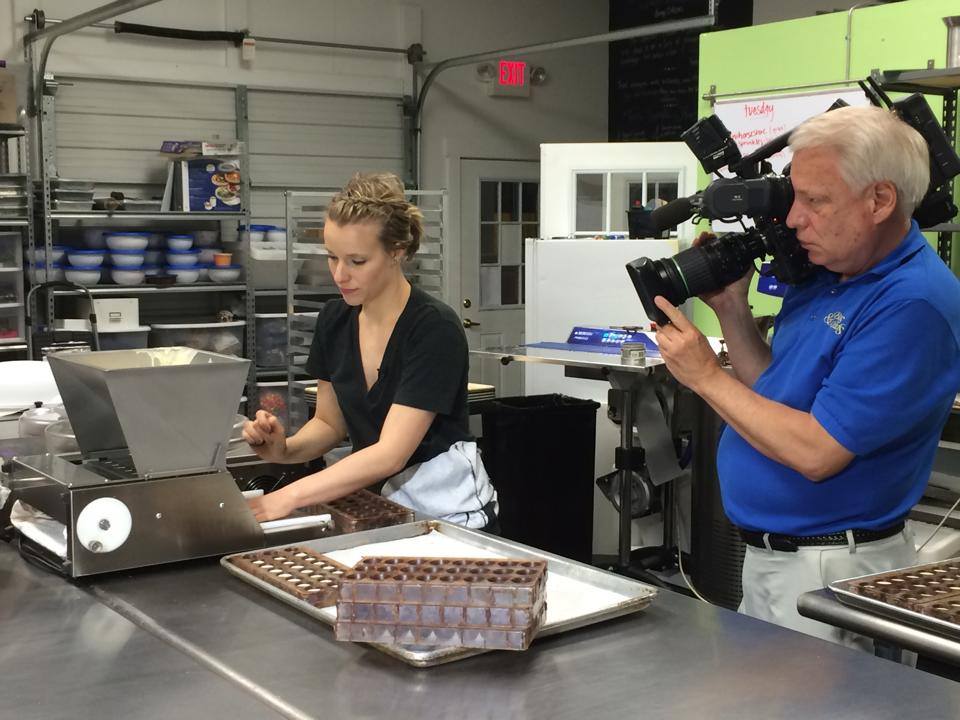
Which leads to the other issue they both agree on – Bluegrass & Backroads is not the Shrader and Hilton show, and it never will be. In each segment, Shrader and Hilton take as little film time as possible. In the Eubanks dulcimer example, the entire segment runs seven minutes and two seconds, with the whole introduction, including the floating graphic, running less than 30 seconds.
“One thing that we do, we remove ourselves from the story. We let the people who are in the story tell the story,” Shrader says.
Hilton agrees, “We let the content speak for itself.”
By getting out of the way, these two producers manage to shine a light on the passion of the people that permeates their home state.
“We were interviewing a gentleman who is an artist, he’s very well known, and he was moved to tears in his conversation and his interview with us. We could tell how much it touched him, what he was saying and for him to share that kind of heartfelt feeling with us that means a lot,” Shrader says. “And then we interviewed a man who was almost killed in a roll-over tractor accident and I was moved to tears in that one because just listening to what the mother said when she rounded the hillside and saw the four wheels sticking up in the air, it sent shivers up my spine.”
It might just be that special Kentucky combination that keeps the award nominations rolling in.
Both Shrader and Hilton are members of the Ohio Valley Chapter of NATAS. They comb through the past years’ worth of 16 different episodes (right around 65 segments), and find which segments might make suitable entries into the awards process. After that, a NATAS committee reviews each of the entries, and then makes nominations in each of the 50-plus categories. Those nominations are then judged according to a set criteria and winners are selected based on who achieves the highest marks.
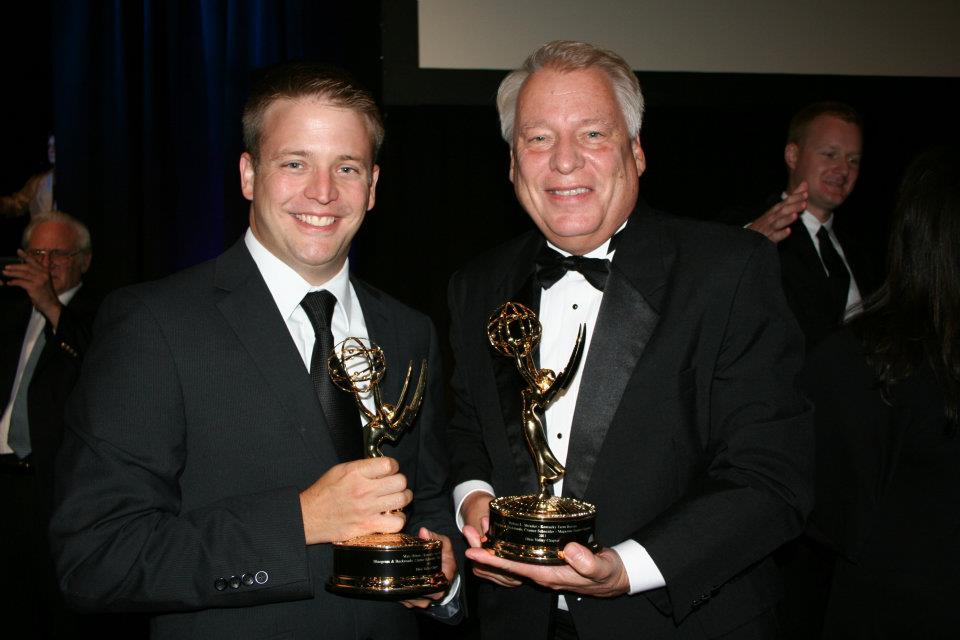
Bluegrass & Backroads falls into the NATAS category of Magazine Feature/Segment. They received nominations for five segments, including entries that centered on Dulcimer Builder Mark Eubanks, Artist Keith Chambers Wood Werks, Artist Tim Hall, Artist Bill Kolak and Cellar Door Chocolates.
These five nominations round out the total Bluegrass & Backroads nominations over the years to 13, with three Emmys awarded to the show since the duo began.
“It is the highest award our show can earn,” Hilton says. “It means that we are doing good work and the people who do what we do think so, too. That is really special to win.”
The men will find out on July 25 at the Keeneland Entertainment Center in Lexington, if they can add to their list of winning segments.
Bluegrass & Backroads airs on all three KET channels, WBKD in Bowling Green, WEHT in Evansville/Henderson, WPSD in Paducah, WYMT in Hazard, and WTVQ in Lexington. In addition, there are 167,000 households tuning in to the show weekly on RFD-TV.
And the best story they’ve ever done? Shrader says is the next story they are getting ready to do, each and every time. Shrader likes the “warm, fuzzy stories that seem to have some meat behind them, stories that nobody else would tell if we didn’t tell them.”
And the stories must resonate across the Bluegrass and up and down every Kentucky backroad.
“We want this show to be everybody’s show, a show that is Kentucky,” Hilton says. “Hopefully, it’s making people proud of their state.”
About Kentucky Farm Bureau
Kentucky Farm Bureau, like all Farm Bureaus across the nation, is a voluntary organization of farm families and their allies dedicated to serving as the “voice of agriculture” by identifying problems, developing solutions and taking actions to improve net farm income, achieve better economic opportunities and enhance quality of life. The organization was founded at a meeting in Louisville, in November 1919. With nearly 500,000 members, KFB is one of the largest Farm Bureaus in the nation.
Kristy Robinson Horine is a freelance writer who lives in Paris.















